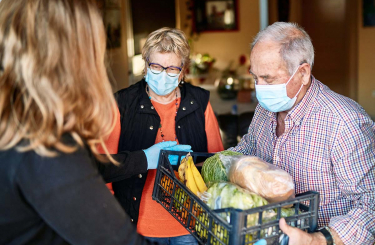Related


Covid-19 Resource Hub
3 Sep 2021
Funded by Trust for London – a London Funders member – and written by the New Policy Institute, research for a report exploring which groups of people and places in the capital were most vulnerable to covid-19 began in June as the pandemic was receding and the challenge was thought to be how to ‘build back better’. Now, results in, what can we learn from such a report when the immediate challenge is how to avoid being overwhelmed by a second wave?
The report shows that some of the high-risk occupations are filled disproportionately by Londoners in both Black and Bangladeshi ethnic groups whose overall death rates were among the highest in the first wave. This is not evidence of cause and effect, but does point towards some of the deeper economic factors behind the now well-known inequalities in covid-19 outcomes.
The report also points to the potential significance of both overcrowding and those over 70 sharing a home with people of working-age. The leaked SAGE guidance to government three weeks ago notes that ‘household transmission remains the most widely recorded setting of transmission’.
How does unemployment impact a London workforce whose housing is less secure and less eligible for support from social security than in the last big recession a dozen years ago?
Alongside concentrating on mitigating the worst effects of a second wave, questions about how to ‘build back better’ are important and of short and longer-term population health significance. For example, who is most at risk from the withdrawal of the furlough scheme? How does unemployment impact a London workforce whose housing is less secure and less eligible for support from social security than in the last big recession a dozen years ago?
Combining data on employment, furlough support, housing tenure and claims for Universal Credit, the report can be seen as painting a picture of where London’s younger working class is now concentrated: in half a dozen boroughs to the outer east and north-east, stretching from Enfield to Barking and Dagenham; in Brent, Ealing and Hounslow to the west; and in Croydon to the south.
Three groups of people should now routinely be regarded as vulnerable:
At the same time, the report also underlines the needs of long-standing groups of both children and adults of all ages with particular vulnerabilities, for example children living in areas of deprivation, adults with learning disabilities and people seeking asylum.
Citing a recent nationwide survey, the New Policy Institute draws attention to the sharp rise in the incidence of self-reported mental health problems among younger adults and those who are key workers, noting again a pattern with the younger working-age adults who are most exposed to the economic threat. Although the survey nationwide, there is no reason to suppose that London is an exception.
Vulnerability can be understood as a way to describe population groups with less control to mitigate infection risk and/or the economic and social impacts of covid-19. As we face a second wave, funders, policy makers and service providers should focus on a wider definition of vulnerability and protect people who are unable to avoid risk because of the work they do or their living arrangements at home. Click here to read more from Trust for London and the New Policy Institute.

